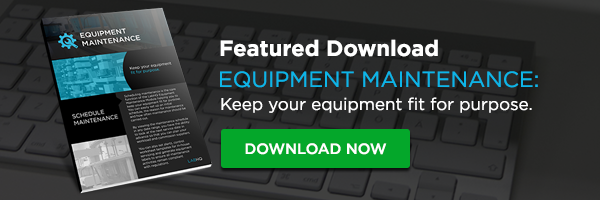
Have you ever stepped into a lab, and it looks like it was lost in time? No computers. Data recorded in paper notebooks. Equipment over twenty years old. If this sounds like your lab, and you’re ready to bring it back to the future, here are a few modern practices that LIMS can help you upgrade to.
Data Storage
When a laboratory records data on paper, it makes storage and retrieval of data difficult. Your lab will need to have physical storage racks to hold archive boxes of notebooks and depending on how long you’re required to store that data (due to regulatory requirements), you may find that you quickly run out of space. In the event of an audit, or an investigation, you may find that you need to retrieve historical data and thumbing through archive boxes becomes time consuming.
With the introduction of LIMS, you will find that data storage is no longer space dependent because electronically stored data takes up a lot less space. Not to mention the searchability and retrievability of electronic data can turn your search and hunt from hours down to seconds.
Sample Tracking
Samples coming in and out of the lab can become difficult to manage, especially when you have a high throughput. In a quality control setting, you may have production drop off samples to the lab or they may arrive by courier in a sub-contract situation. It’s usually from this point that sample tracking starts and when samples go missing, blame will come into play.
Although there is no electronic replacement of physical samples, LIMS can help you improve sample tracking. Some LIMS systems provide workflow steps with sample status values. This will allow the person responsible at that stage of the process to signify it’s sample status and effectively pass it to the next status with acknowledgement of the next person responsible. For example, customers sending samples to the lab by courier can use sample submission functionality and notify the laboratory that samples are on their way. Once the samples are received by the lab, the lab can then send a notification back to the customer to confirm the samples have been received. A dashboard can then be shared between the laboratory and customer or the laboratory and production, so that the status of each sample or batch tested is transparent between all stakeholders.
Equipment Maintenance
Accurate data is the main output of any laboratory, and in order for your laboratory to deliver accurate data, the equipment needs to be serviced and calibrated to ensure they are properly functioning as expected. Without a LIMS to help manage maintenance activities, service schedules can often be missed and therefore pose a risk to generating inaccurate data. If several maintenance and calibration time-points are missed, then there’s a risk that the equipment would generate false positive test results which could lead to the release of a faulty batch of product where the laboratory is quality control.
Some LIMS systems offer equipment maintenance functionality. This allows you to control your inventory of equipment and give a status of in-use or out of use. You may also set up service and calibration schedules that will send you notifications when it due. Keeping track of your equipment history and servicing electronically will not only help you keep your equipment up to date and accurately producing test results, but it will also reduce your paper storage.
Process Control
As a quality control lab working alongside production, the data generated from testing batches of product can be used for process control. When data is recorded on paper notebooks, tracking and analysing process control is difficult. Data would need to be manually transferred to excel or some form of tool for charting test results over time. The benefit of analysing process control is so that you can catch out of specification before they happen and recommend tweaks to the production process to ensure that batches produced remain within specification.
Recording data electronically in a LIMS allows you to analyse process control easily. Since the data is already stored in LIMS, interrogating and displaying the data in meaningful graphs and charts becomes simple. Therefore, each time a batch is tested, you can compare test results to historical data to view trends, and where the trend is veering out of spec, you will be able to catch this early and implement any preventative action before a costly error occurs in production.






